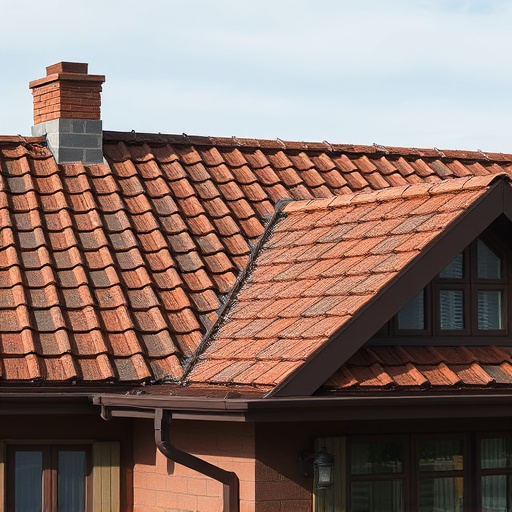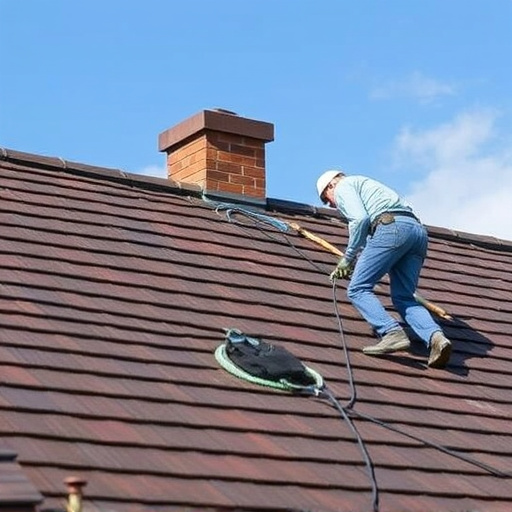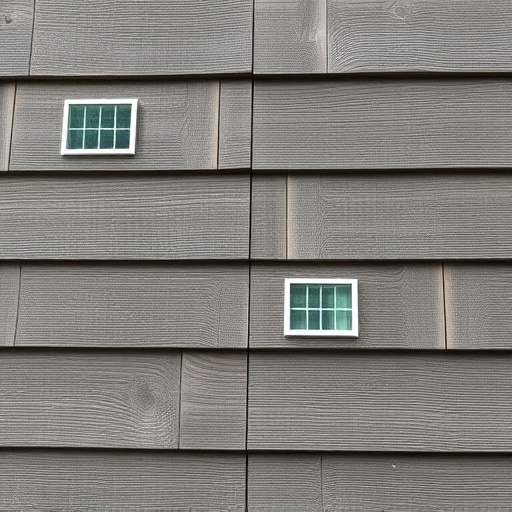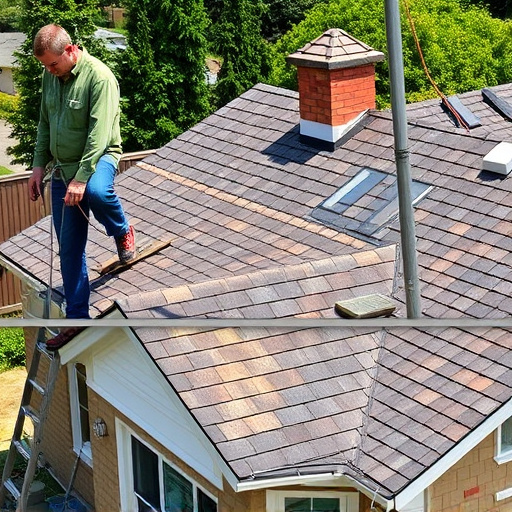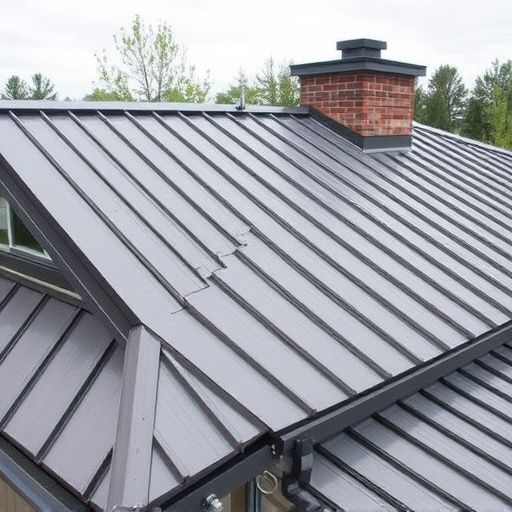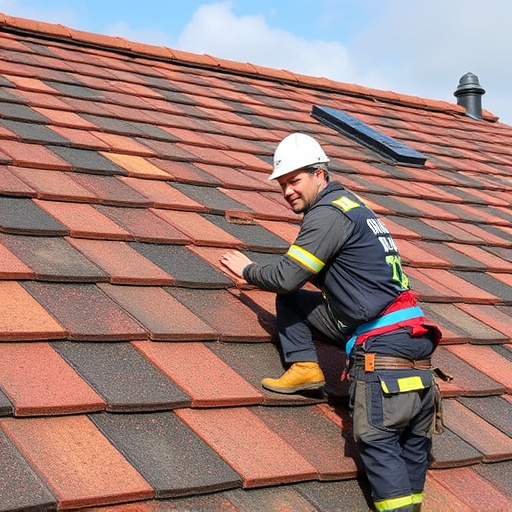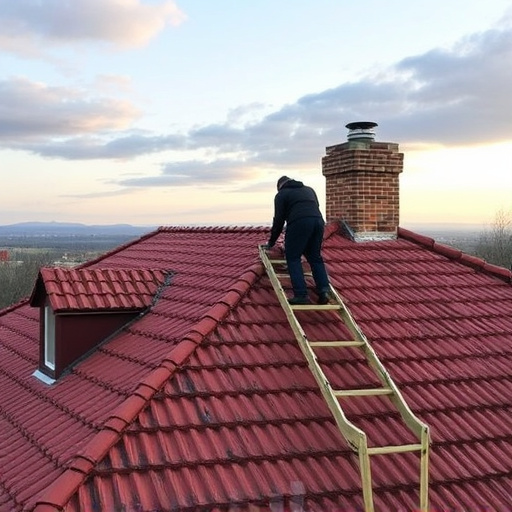Roof replacement involves unique expertise for each material (asphalt, metal, tile), requiring careful consideration of maintenance, flashing, expansion, weight, and drainage gaps. A professional inspection guides homeowners through selection, removal of old roofs, underlayment installation, and fitting new shingles. For metal or tile roofs, expert help is crucial due to specialized knowledge needed for complex issues like structural damage and leaks. Choosing professionals ensures robust, long-lasting protection.
Roof replacements are a significant home improvement project, with choices varying based on material. This article guides you through efficient strategies for replacing asphalt, metal, and tile roofs. Understanding your specific needs is key; each material requires unique considerations. We provide an in-depth look at the process, offering a step-by-step guide for asphalt roofs, and highlighting when expert assistance is vital for metal and tile installations. Discover expert tips for seamless roof replacements that enhance your home’s value and protect it from the elements.
- Understanding Roof Replacement Needs for Different Materials
- The Asphalt Roof Replacement Process: Step-by-Step Guide
- Metal and Tile Roof Replacements: When to Consider Expert Help
Understanding Roof Replacement Needs for Different Materials
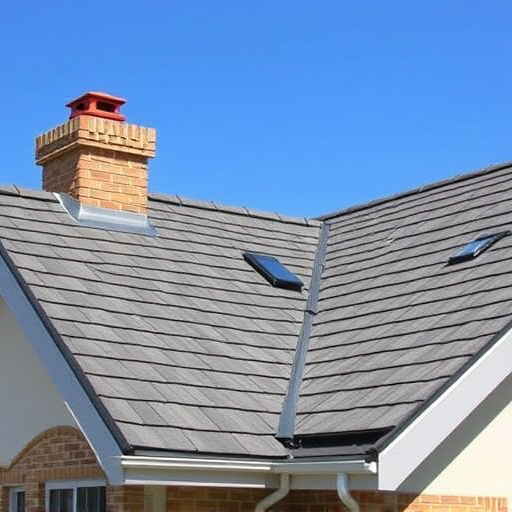
When considering roof replacement, understanding the unique needs of each roofing material—asphalt, metal, and tile—is crucial. Asphalt roofs, common in residential settings, require regular maintenance to prevent leaks and cracks. Roof replacement for asphalt usually involves removing the old shingles, inspecting the underlayment, and installing new shingles with proper flashing to ensure water tightness.
Metal roofs, often found on commercial buildings or modern homes, offer durability and low-maintenance benefits. During a roof replacement for metal, professionals must account for expansion and contraction to prevent damage. This process may include removing old panels, inspecting for corrosion, and securing new metal panels with specialized fasteners. Tile roofs, known for their aesthetic appeal, need careful handling during replacement due to their weight and fragility. Replacing tile roofs involves removing broken or damaged tiles, repairing the underlayment if necessary, and installing new tiles while maintaining proper gaps for water drainage. Additionally, in cases of storm damage repair, siding replacement may be required alongside roof replacement to ensure a structure’s comprehensive protection.
The Asphalt Roof Replacement Process: Step-by-Step Guide
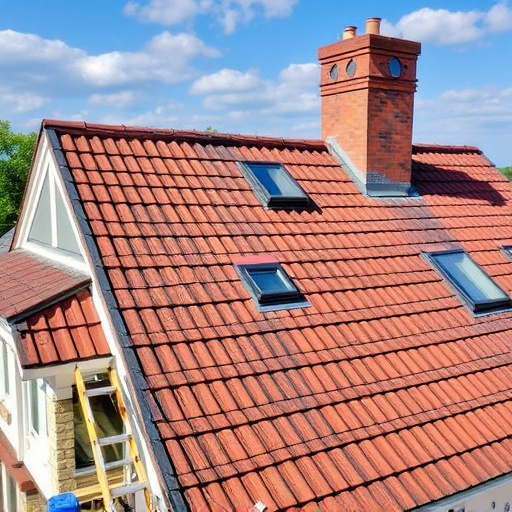
Roof replacement is a significant exterior home improvement project that offers both functional and aesthetic benefits. When it comes to asphalt roof replacement, understanding the process is key to ensuring a successful outcome. Here’s a step-by-step guide to help you navigate this essential roofing solution:
1. Inspection: Begin by hiring a professional to inspect your current roof for damage or wear. This step is crucial as it determines the scope of work and materials needed. During the inspection, they’ll assess the structure’s integrity, identify problem areas, and provide recommendations for suitable roofing solutions.
2. Material Selection: Choose your new asphalt roofing material. Asphalt shingles are a popular choice due to their affordability, ease of installation, and variety of styles. Consider factors like climate, local building codes, energy efficiency ratings, and warranty options when selecting your new roof.
3. Removal of Old Roof: The old roof needs to be safely removed. This process involves tearing off the existing shingles or tiles, removing any underlayment that is damaged or deteriorated, and preparing the deck for new installations. Ensure proper disposal of waste materials generated during this step.
4. Installation of Underlayment: A protective barrier, known as underlayment, is installed over the roof deck to shield it from moisture and provide extra insulation. This layer offers added protection against leaks and is a crucial component in any roofing job.
5. Fitting New Asphalt Shingles: With the underlayment in place, new asphalt shingles are meticulously fitted, starting from the bottom edge of the roof and working upwards. Each shingle is secured with nails or screws to ensure a sturdy, weather-resistant surface. Gutters and downspouts are also installed to manage water runoff effectively.
6. Final Inspection: After completing the installation, conduct a thorough inspection to verify that all work adheres to local building codes and industry standards. Look for any potential issues, such as loose shingles or improper flashing, and address them promptly.
Metal and Tile Roof Replacements: When to Consider Expert Help
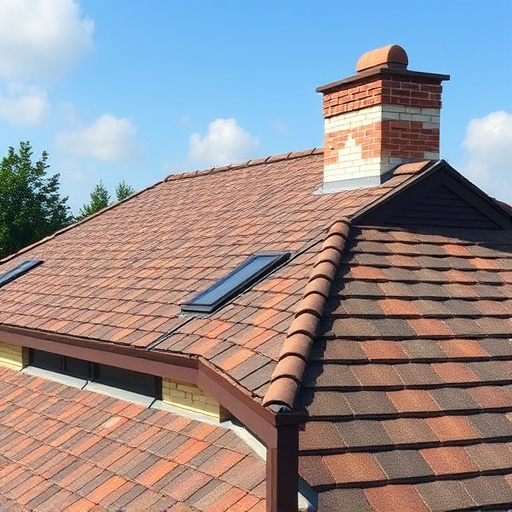
When considering a roof replacement for metal or tile roofs, it’s crucial to recognize when expert help is essential. While minor repairs and routine maintenance can often be tackled by homeowners, more extensive or complex issues may require the skills of professionals. Metal and tile roofs, due to their unique materials and installation processes, demand specialized knowledge to ensure both functionality and aesthetics are maintained.
Expert roofers possess the training and experience needed to handle challenges like structural damage, leaks, or wind/weather-related problems specific to these roofing types. They have access to high-quality materials and tools designed for longevity and durability. Homeowners should consider professional assistance if their roofs exhibit signs of severe wear, persistent leaks, or if they’re unsure about the extent of required repairs. Opting for expert roof replacement services guarantees a more robust, long-lasting solution, providing peace of mind and ensuring your home’s protective barrier remains intact.
When considering a roof replacement, understanding the unique needs of each material—be it asphalt, metal, or tile—is crucial. This guide has provided an in-depth look at the processes involved, from identifying wear and tear to the step-by-step installation for asphalt roofs. For metal and tile roofs, while DIY methods are possible, certain complexities may require expert assistance. Regardless of material, prompt action on roof replacement ensures structural integrity and enhances your home’s longevity. Now, armed with this knowledge, you’re ready to navigate the process and make informed decisions for your roof replacement needs.








